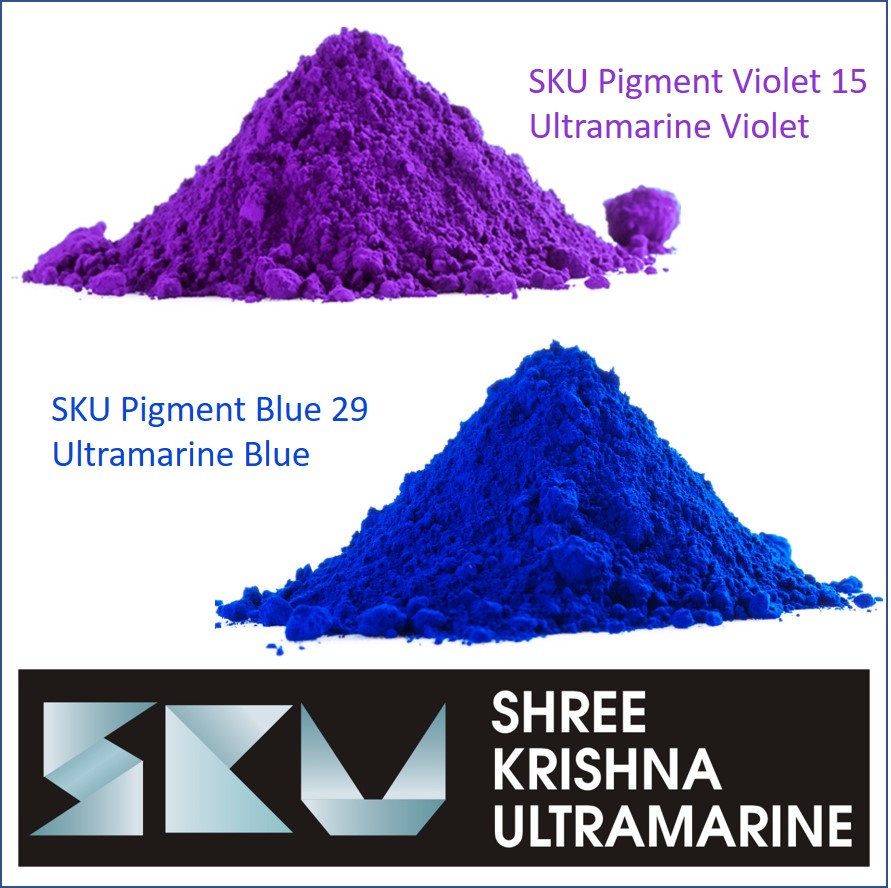The Greatest Knowledge on Ultramarine Blue pigments That Must Know
Ultramarine Pigments: The Timeless Brilliance of Blue and Violet Shades

For thousands of years, color has shaped art, design, and industry. Among the most celebrated hues, Ultramarine is revered for its depth and richness. Today, companies like SKU Pigments produce high-quality Ultramarine pigments, including Ultramarine Blue, Ultramarine Violet, Pigment Blue 29, and Pigment Violet. From paints and plastics, Ultramarine has become the backbone of modern blue pigments.
The History and Significance of Ultramarine
The name Ultramarine comes from the Latin “ultra mare,” meaning “beyond the sea,” a reference to lapis lazuli originally imported from Afghanistan. For centuries, it was a rare treasure, used by Renaissance masters to paint sacred art. It symbolized luxury and spirituality.
Modern chemistry made it possible to manufacture Ultramarine pigments, bringing the once-exclusive shade into mass production. This breakthrough turned a precious rarity into a widely available solution for countless sectors.
Why Ultramarine Blue Leads the Industry
Ultramarine Blue pigments—the synthetic form of Pigment Blue 29—are industry favorites. Known for their stability, they are perfect for sensitive applications. They are used in:
• Decorative finishes for rich tones.
• Automotive and packaging industries, thanks to UV resistance.
• Publishing and packaging, where precision is vital.
• Cosmetics, given their safety profile.
This balance of durability and eco-friendliness keeps Ultramarine Blue among the global color leaders.
The Elegant Appeal of Violet Shades
Ultramarine Violet offers delicate hues that appeal in cosmetics. Pigment Violet derived from Ultramarine is stable, making it ideal for sensitive products.
Its muted shade enhances interior design, while ensuring longevity without chemical breakdown.
How Pigment Blue 29 Powers Industries
Pigment Blue—particularly Ultramarine Blue pigments—remains a core pigment. It offers tinting strength for:
• Vehicle coatings with brilliant sheen.
• Consumer goods, ensuring stable shades.
• Construction materials, adding functionality and design.
This wide applicability ensures Pigment Blue’s future relevance.
Advantages of Ultramarine Pigments
• Non-Toxic & Safe: Certified safe for consumer goods.
• Heat & Light Resistant: Colors don’t fade under UV.
• Eco-Friendly: Reduced environmental impact.
• Cost-Effective: Affordable vs. natural pigments.
• Versatile: From fashion to infrastructure.
Where Ultramarine Pigments Shine
1. Paints & Coatings: Durable architectural shades.
2. Plastics & Rubber: Safe for packaging.
3. Cosmetics: Skincare-safe pigments.
4. Construction: Plaster and decorative Pigment Blue 29 finishes.
5. Printing & Inks: Sharp colors for publishing.
Why Choose SKU Pigments?
SKU Pigments leads the market, offering innovation in Ultramarine pigments. Their product portfolio includes:
• Pigment Blue 29 for industrial-scale use.
• Ultramarine Violet and Pigment Violet for luxury tones.
• Custom shades for niche industries.
Their reputation is built on global reach and green practices.
Final Thoughts on Ultramarine Pigments
From a rare treasure to a global industrial pigment, Ultramarine has remained relevant for centuries. Whether it’s the timeless vibrancy of Ultramarine Blue, the subtle elegance of Ultramarine Violet, or the dependability of Pigment Blue 29, Ultramarine pigments remain indispensable.
With SKU Pigments as a global supplier, industries gain beauty, safety, and performance. As demand for sustainable pigments rises, Ultramarine will remain dominant in global markets.
FAQs
1. What is Ultramarine?
A vibrant pigment from lapis lazuli, now produced synthetically.
2. What is Pigment Blue 29?
The standard code for Ultramarine in industries.
3. Where is Ultramarine Violet used?
In eco-friendly and children’s products.
4. Are Ultramarine pigments safe?
Certified safe for cosmetics and toys.
5. Why choose SKU Pigments?
Leaders in Ultramarine innovation.